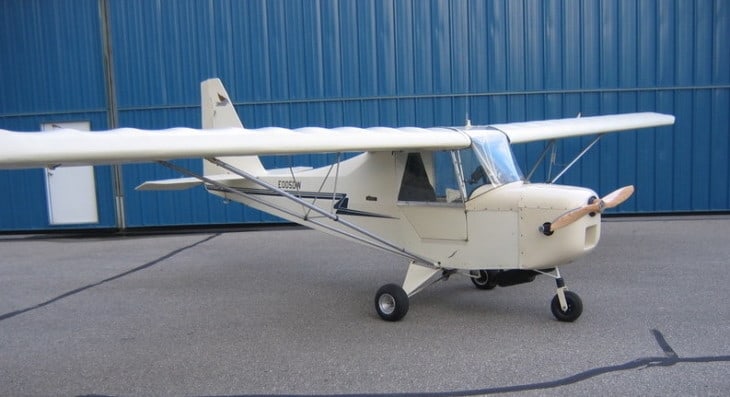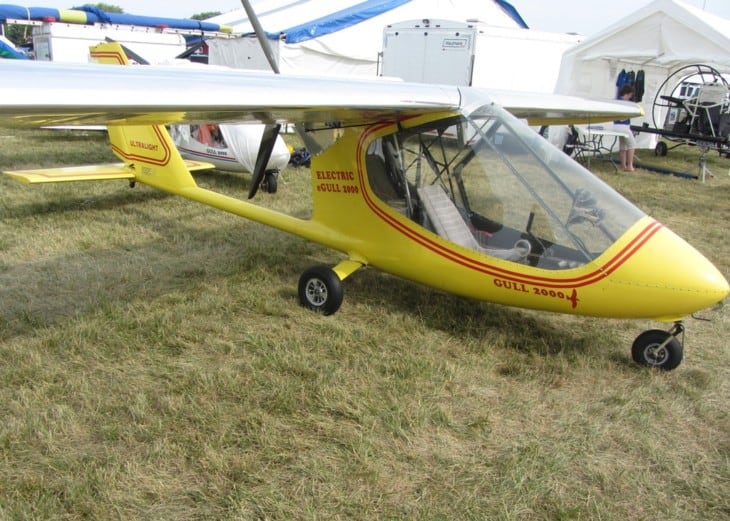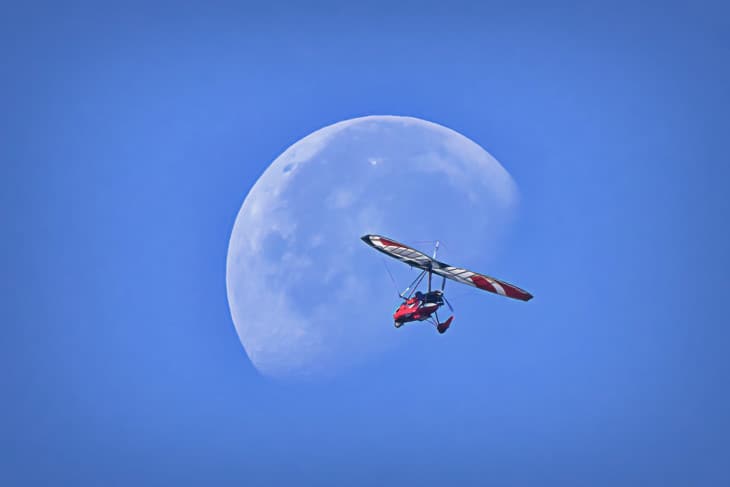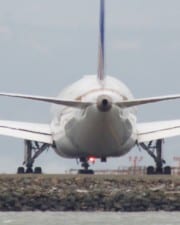If you’ve ever looked for a cheap aircraft, you’ve probably come across two types of aircraft that are considerably cheaper than traditional aircraft: ultralights and kit aircraft.
Indeed, unlike other types of aircraft, the difference between ultralights and kit aircraft isn’t so clear-cut. You see, some kit aircraft can be ultralights, and some ultralights can be kit aircraft, but not all kit aircraft are ultralights and vice versa.
In this guide, we’ll aim to explain the precise differences between the two types, why some aircraft fall into both categories, and ultimately which may be better for you as a pilot.
About Ultralight Aircraft
Ultralight flying uses very lightweight, powered aircraft with one or two seats and conventional pitch, roll and yaw controls.
Elsewhere in the world, the category of ultralight aircraft is wider than in the USA, which reserves the title ‘ultralight’ for the very smallest and lightest planes.

An ultralight aircraft in the USA must be a single-seater, used exclusively for sport or recreational flying. It must weigh less than 254 lb empty (excluding any flotation equipment) and have a maximum fuel capacity of five gallons.
It must be capable of no more than 55 knots (63 mph), with a stall speed (power-off) of 24 knots (28 mph) or less.
Why Were Ultralight Aircraft Developed?
In the later part of the twentieth century, many people were looking for an affordable way to take to the skies. Cutting the cost of powered flight means dispensing with non-essential things, so the designers set out to distill down an airplane to its bare necessities.
The Bare Necessities
If you want to get off the ground, you need a way of generating lift. An airfoil wing is the lightest, most straightforward way to do that, so a wing is definitely on the essentials list.
Next, if you don’t want your first flight to end badly, you need to be able to steer your airplane, and control climb and descent, so movable control surfaces (such as ailerons, elevators and rudder) are a must.

Energy has to come from somewhere, so you need an engine, the lighter and more efficient the better. Finally, you need a set of wheels for takeoff and landing, and somewhere for the pilot, and maybe one passenger, to sit or lie.
What we now have sounds rather like the original Wright Brothers’ Flyer. Take a look at a modern ultralight aircraft and you’ll find some differences, though.
The Flyer had a canard arrangement, ahead of the wing, for steering, whereas we have since learned that a trailing set of control surfaces does the job much better, like the flight fins on an archer’s arrow, which stabilize flight very well.
That said, some modern ultralights do still use canards, such as the Pterodactyl Ascender, which has a canard to control pitch, with wingtip vertical stabilizers to control yaw.
Also, the Wright Flyer had twin conventional propellers ahead of the wing. Modern ultralight airplanes such as the Hunter Pathfinder have a pusher propeller driven by an engine mounted immediately behind the pilot.
What Purpose Do Ultralight Aircraft Serve?
Ultralight aircraft bring powered flight within the reach of almost anyone with the determination to have a go.
By reducing the concept of an airplane to the vital parts, ultralight aviation’s purpose is to release us all from the surly bonds of Earth, as poet John Gillespie Magee Jr once put it.
About Kit Aircraft

Kit aircraft, or homebuilt airplanes, are aircraft built from parts and plans, by people who do not make airplanes professionally.
In the USA, it is possible to get a kit aircraft licensed as Experimental, and you can also get a repairman’s certificate enabling you to sign off all your own maintenance.
That practically makes you and your kit airplane a self-contained operation. Provided it’s only for your own recreation or education, and not for gain or profit, it’s all fine and legal.
Why Were Kit Aircraft Developed?
Basically, kit aircraft were developed to bring regulation and safety to the increasingly perilous practice of amateur airplane building and flying. Here’s how it went.
In 1924, homebuilt airplanes became popular in the USA when the National Air Races began, in Dayton, Ohio. The class limitations for entry (maximum useful load 150 lb, engines 80 cubic inches or less) meant most competing aircraft were built by amateurs.
When Charles Lindbergh made the first solo transatlantic flight, from New York to Paris in 1927, interest in home-built aircraft surged.
The trouble was, because there were no proper regulations or certification needed to build and fly your own airplane, there were many accidents and the pastime attracted a lot of negative publicity.
So, the concept of the kit aircraft was born. In response to many calls from enthusiasts for safe, properly regulated home-built airplanes, the USA (and Canada) began to allow kit aircraft from the 1950s onward.
What Purpose Do Kit Aircraft Serve?
Kit aircraft make it straightforward, affordable and safe for an amateur airplane builder to construct an aircraft he or she can operate.
Freed from the danger of trial-and-error that comes with building your own experimental airplane from scratch, the kit aircraft enthusiast can know they are constructing a tested product, in which they can safely pursue their love of flying.
Home-built kit aircraft are designed with simplicity of construction in mind, so they can be assembled at home without specialized equipment, by an amateur builder who has no engineering qualification.
More and more parts are made of fiberglass or composite these days, combining lightness with strength, making them easy for single builders to handle and assemble.
Nowadays, it is common for owners of home-built airplanes to equip them for instrument flight, enabling them to fly at night and in IMC (instrument meteorological conditions).
If the kit consists of parts that are manufactured under the FAA Technical Standard Order approval, so much the better.
However, the FAA does not issue blanket airworthiness approval for kit aircraft, because of the many things that might go awry while the kit is being assembled. Here is a guide to getting your home-built airplane certified by the FAA.
How are Ultralight Aircraft and Kit Aircraft different?

At first glance, many ultralight aircraft look quite flimsy, with struts-and-fabric wings, tubular aluminum frames, and the pilot and engine suspended beneath.
A typical modern kit aircraft, on the other hand, looks more like an airplane, with a rigid wing, enclosed cockpit and an engine mounted within the fuselage.
How are Ultralight Aircraft and Kit Aircraft similar?
Both types are fixed-wing, powered aircraft, controlled by a pilot who is on board the machine.
Both ultralight and kit aircraft are aimed at bringing recreational, educational flying within reach of as many people as possible, by making the costs reasonable while maintaining an acceptable standard of safety – the foremost priority in any kind of aviation.
Some more recently-developed ultralight aircraft, such as the Aeromarine Merlin Lite, have a windshield and resemble a conventional airplane more than their open-design counterparts.
Thus, there is some overlap between the worlds of ultralight aircraft and kit aircraft – the Merlin comes ready-built, or as a kit.
What’s better about Ultralight Aircraft?
You don’t need to get a pilot’s license, or take a medical exam, to be able to fly an ultralight. With a kit aircraft, you have to obtain and keep up the same FAA pilot training and ratings as pilots of manufactured airplanes.
The main advantage of an ultralight is its accessibility to everyone, regardless of FAA documentation and pilot rating.
If you don’t want to get embroiled in the lengthy process of airworthiness certification that’s part and parcel of owning and operating a kit airplane, then you’ll definitely prefer an ultralight.
If you want to get straight into the air with no fuss or palaver, ultralight is the way to go.
What’s better about Kit Aircraft?
Although it’s a longer and harder road, documentation-wise, to get qualified to fly a kit aircraft, you have the advantage of being able to carry passengers if the airplane has enough seats.
Once your completed kit airplane is properly certified, you can also fly at night or in non-VFR conditions, provided you have an instrument pilot rating and a suitably equipped aircraft.
Kit aircraft are generally more enclosed than ultralights, with the pilot (and passenger, in a two-seater) inside the fuselage, less exposed to the weather, and to outside objects if things don’t go according to plan.
In the case of aircraft with rear-mounted, pusher propellers, an open ultralight carries the risk of objects dropped by the pilot (such as phones or cameras) fouling the propeller and damaging it. In that sense, the enclosed environment of the kit airplane contributes to overall safety.
Conclusion
It very much depends on what you’re looking for.
If you want to get airborne with no fuss or frills, feel the wind beneath your wings, enjoy the daytime scenery and free yourself from Magee’s gravitational bonds, go with ultralight.
If, however, you see yourself flying something that looks and feels more like a conventional airplane, one that you can actually get in and out of, a kit aircraft may well be the solution for you.
Related Posts













